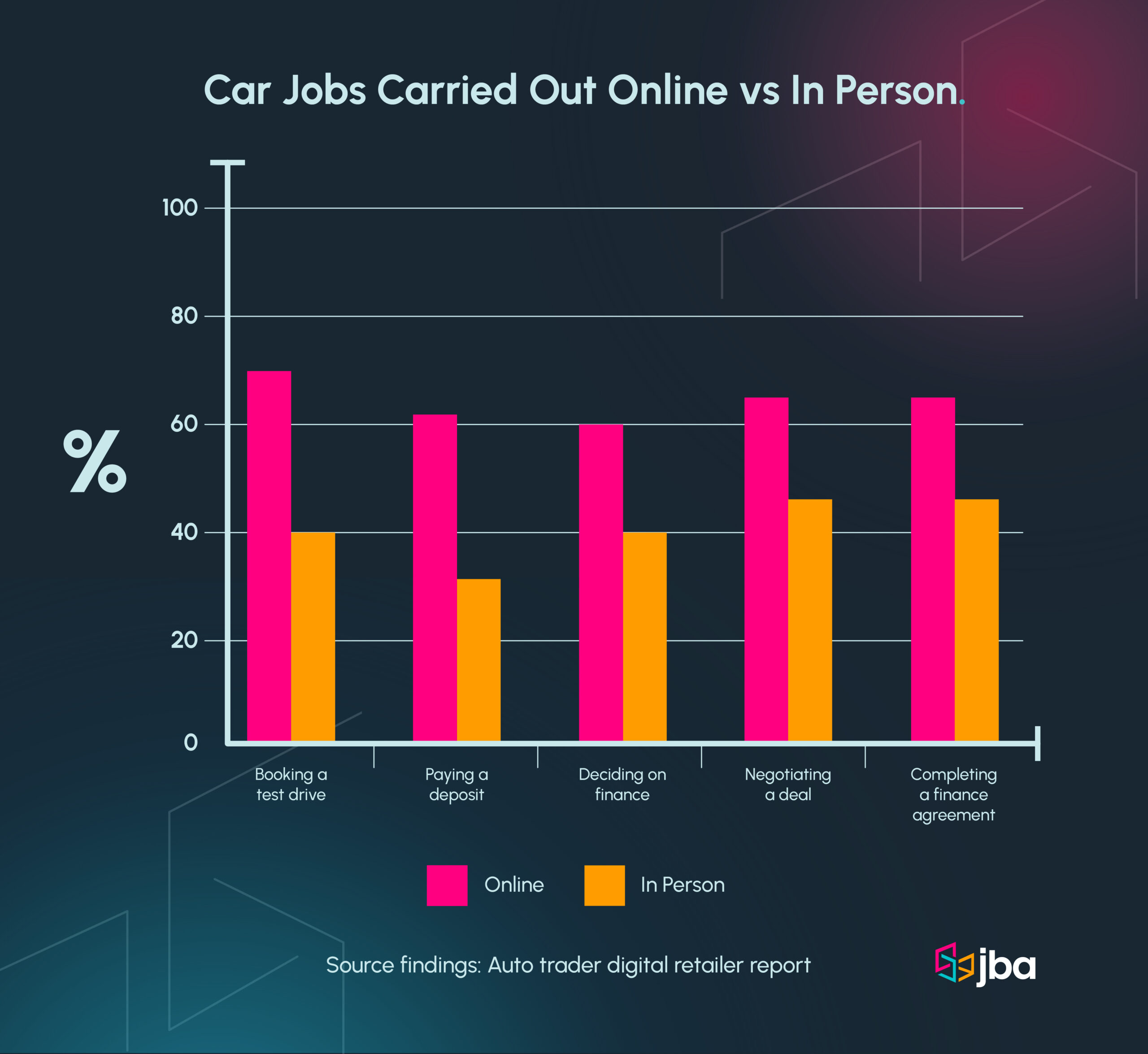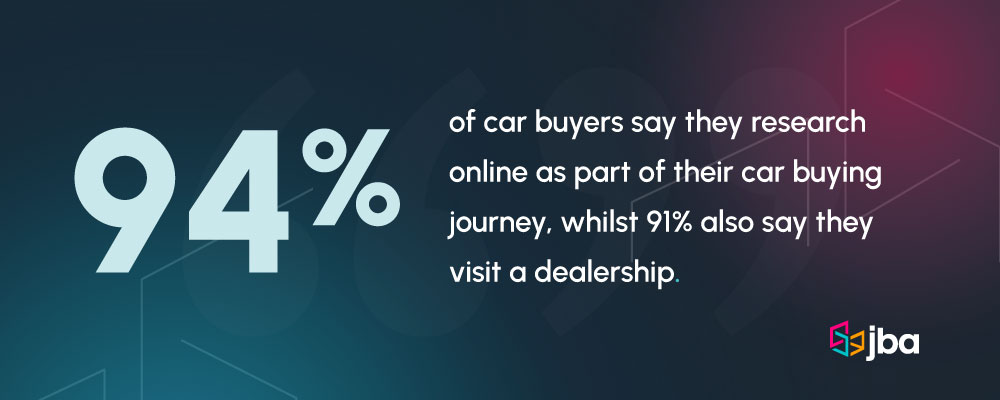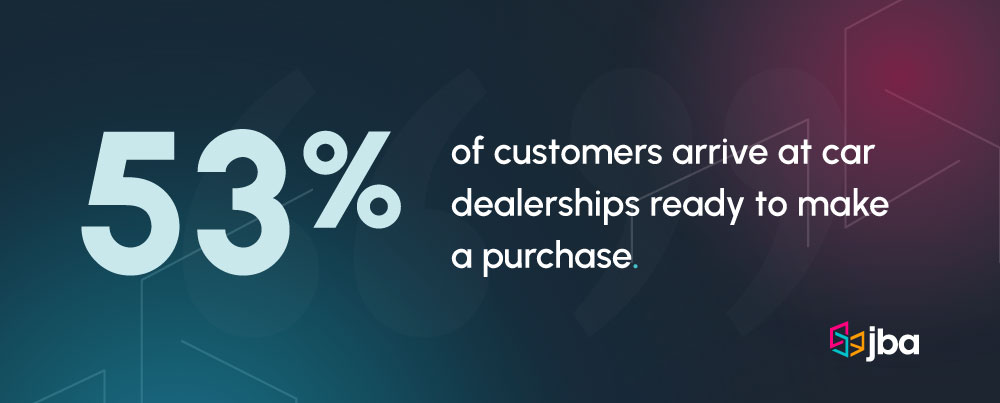Omnichannel retailing is paving the way forward for the automotive industry.
The global pandemic catapulted the automotive industry forward in its application of new technology for interacting with customers. Whilst some thought these measures were temporary, it is clear that in the ‘new normal’, customers expect to have the best of both worlds – the ease of buying online coupled with the personal advice and customer experience provided by physical Dealerships.
The rise of online experiences has led car buyers to follow omnichannel customer journeys, involving a combination of both online and offline methods in their research, selection, and purchase processes. As a result, they expect a seamless experience across all touchpoints, demanding consistent customer service regardless of how they shop.
Addressing the needs of these modern consumers is no easy task. It goes beyond creating websites and mobile apps; it requires thorough operational changes to break down the barriers between physical and digital worlds.
In this blog, we’ll be exploring the benefits of omnichannel retailing in the automotive industry as well as the steps your dealership can take to improve its approach.
The Importance of Omnichannel Retailing in the Automotive Industry
Regardless of what customers are buying, they want the option to do it all from their device, or at least the flexibility to move between online and offline channels.
Whilst many customers still want to complete the actual car purchase in-store, a significant amount of car buyers carry out the vast majority of the research and selection process online.
According to a report by Autotrader, which includes consumer research of over 3,000 car buyers and 227 automotive retailers, 53% of customers turn up to the dealership ready to make a purchase.
This is a significant increase from 2019 when only 32% of customers said they arrived at the forecourt ready to make a purchase. However thanks to technology and the ability to carry out different jobs online, this number has risen to more than a half.
Furthermore, the findings from the report skew heavily towards online when it comes to carrying out other ‘admin’ type car jobs, including booking a test drive (70% / 30%), paying a deposit (61% / 39%), deciding on finance (60% / 40%), negotiating a deal (55% / 45%) and even completing a finance agreement (54% / 47%).

The Changing Role of the Dealer in Omnichannel Retailing
The role of the dealer is far from obsolete. In fact most consumers prefer a blended approach, where they can complete some of the car buying ‘jobs’ online, and others in person.
According to the report by Autotrader, consumers still prefer to complete the more tangible aspects of buying a car such as final inspections, in-person. This is because the consumer can get a real look and feel of the car before parting with a significant amount of money.
That’s why the most desired option is a hybrid approach as supported by the report which highlighted that 94% of car buyers research online, whilst 91% also say they visit a dealership.

What omnichannel retailing means for your sales team
As most of the research is being carried out before customers arrive at the forecourt, buyers are more informed and are further down the sales funnel i.e. they know what they want.
For dealers, this means their teams need to adopt quite a different attitude to the traditional push approach and instead, be equipped with all of the knowledge and tools to surprise and delight clients and remove any final doubts the customer may have had in order to make the sale.
The consumer relies much less on the sales team so any interactions need to be meaningful.
Crucially, implementing digital services early on in the buying journey enhances the customer experience as your sales team can gather key insights about different preferences to better tailor the assistance they provide.
To meet these changing demands, automotive retailers are investing in new job roles. According to the findings by Autrotrader, 94% are introducing dedicated customer service roles, 91% are introducing IT roles, and 95% are introducing data analytics roles which can help reduce manual tasks salespeople may otherwise have to manage.
How to Implement Omnichannel Retailing in the Automotive Industry
Understanding the importance of omni channeling retailing in the automotive industry is the easy part; knowing how to execute it effectively to consistently engage customers is a different ball game.
Whilst having multiple touchpoints to engage customers is positive, it always means there’s more opportunities for them to ‘drop off’. Below we’re exploring actionable ways that you can execute an omnichannel retailing model to deliver the best experience online and offline.
Use technology to enhance the customer experience
In the luxury automotive sector in particular, technology should be used to complement and enhance the personal interaction with customers rather than replacing it.
For instance, technology can be leveraged to facilitate virtual car commissioning sessions through platforms like Teams or Zoom, allowing clients to create and customise their dream cars from the comfort of their homes. This not only increases convenience for clients but also enables the sales team to gain insights from the client’s environment, using it as inspiration to tailor the car options presented.
For example, let’s imagine during a call, the sales representative notices that the client’s home office is decorated with modern, sleek, and minimalist furnishings. They also spot a high-end, minimalist art piece on the wall.
From this, they know that the client appreciates art and design so they can use it to emphasise the car’s customisation options. They can showcase different upholstery materials, interior trim choices, and personalised accents that allow the client to create a car that feels like a work of art and reflects their unique taste.
It’s about using these visual cues to personalise the recommendations the sales team provide, thereby creating a more tailored and memorable experience.
Add value to each showroom visit
As we mentioned earlier in the post, 53% of customers turn up to the dealership ready to make a purchase so your sales team need to maximise this opportunity.
The importance of manufacturers and dealerships adding significant value to each showroom visit lies in elevating the customer experience beyond what can be accomplished remotely.
While online sources can provide information and facts, the showroom visit should create engaging, emotional, and memorable experiences that foster deep connections with customers.
This entails utilising meaningful technology, such as advanced car visualisation systems, but with the active involvement of salespeople who serve as design consultants.
For example, your sales team should understand the intricacies of each car model, including available options, accessories, and packages. With this, they can offer expert advice on which configurations best suit the customer’s needs, helping customers navigate the multitude of choices available.
Furthermore, data-driven insights, as seen when selling electric cars, play a pivotal role in addressing customer concerns. Range anxiety stems from customers asking multiple ‘what if’ questions.
However, objectively quantifying how the customer actually uses their vehicle using commonly recorded mileage and usage patterns, dealerships can shift the discussions from the emotional uncertainties of ‘what if’ to the rational decision-making of ‘what you actually do’. This adds real value for the customer enhancing the overall showroom experience and driving customer satisfaction and loyalty.

Prioritise the after sales experience
Prioritising the after-sales experience in the automotive industry signifies a shift towards recognising the significance of customer satisfaction and support beyond the initial vehicle purchase.
This approach entails a focus on integrating the advanced technology and associated apps that come with modern vehicles into the customer’s daily life seamlessly.
Some innovative dealerships are even hiring professionals from the tech industry to offer specialised assistance, ensuring customers can fully benefit from their car’s features.
It extends to providing ongoing customer education, workshops, and one-on-one consultations to empower customers in utilising the vehicle’s technology effectively.
This emphasis on post-purchase support enhances the overall value proposition of the vehicles and fosters customer loyalty in a competitive automotive market.

Benefits of Omnichannel Retailing in the Automotive Industry
Below are some of the benefits of omnichannel retailing, starting with the customer experience.
Enhanced customer experience
With omnichannel retailing you can cater to the customer’s needs regardless of where they are, instead of their online and offline behaviour existing in silos.
For your sales team, this helps them build up a picture of what customers want, so that when they arrive in the showroom, they’re not starting from scratch.
With the majority of research being conducted online, customers in the car showroom are nearing the purchasing stage and so your team are only spending their time dealing with ‘warm leads’ .
By this point, your team should have visibility into the types of colours, car makes/ models that customers are interested in so that they can provide tailored customer service.
Continued customer service
Beyond the buying experience, customers equally value the level of support and service experience they receive.
It’s important to shift your team’s mindset from sales-driven to experience-driven so that they nurture the relationship with customers, even after the point of sale.
Omnichannel automotive engagement is a great way to keep in touch with customers and ensure convenience, helping to build your relationship over time and increase brand loyalty.
For example, you could send personalised reminders when their car is due for a service to help sustain that loop of communication. Another effective idea is creating loyalty programmes which customers can sign up to for rewards and product offers.
Streamlined operations and inventory management
By centralising inventory management, dealers have real-time visibility of stock across all sales channels, including physical dealerships, online platforms, and mobile apps. This is key for consumers searching for a specific type of car, something we’ll cover in more detail below.
This real-time visibility reduces the risk of overstocking or stockouts, leading to more efficient inventory management.
Moreover, an omnichannel strategy enhances inventory visibility for customers, ensuring they have access to up-to-date information on vehicle availability regardless of the channel they use.
Wider consumer appeal
Due to the fact so much research has been carried out online, these buyers are more qualified and more likely to make a purchase when they arrive at your dealership.
As a result, they are prepared to travel further for a specific make/ model of car as they know what they want and they’ve done most of their checks online.
A key part of this involves the customer knowing the stock levels at your dealership before they make the trip. Therefore, having your stock advertised correctly with high quality imagery and all the information a consumer needs to make a decision, is vital for establishing a solid foundation for omnichannel success.
This will also reduce the amount of time they spend on the forecourt and the amount of time they require from your sales people during their visit.
Increased sales opportunities
Omnichannel retailing in the automotive industry opens up a world of increased sales opportunities by providing multiple touchpoints for customers to engage with the brand.
Similar to the point above, this means as a dealership, you are no longer limited by geographical constraints, as you can tap into new markets and customers that may not have been accessible through a traditional single-channel approach.
Furthermore, with access to a comprehensive view of customer data from various channels, you can identify opportunities for upselling and cross-selling.
For instance, if a customer shows interest in a particular car model online, your sales team can offer additional accessories or upgrade packages during the in-person interaction when the customer visits the showroom.
What Are the Benefits of Omnichannel Retailing In the Automotive Industry?
As consumer demands continue to change, it’s clear that omnichannel retailing in the automotive industry is the future and dealerships must adapt if they want to stay competitive. By doing so, you’re giving the consumer greater control, flexibility, and an enhanced experience as they can transition between different channels until they’ve made their decision.
Furthermore, from an internal perspective, an omnichannel approach saves valuable time and effort that would usually have been spent on manual tasks. By going digital and streamlining processes, you can not only provide a better customer experience, but you can also improve the efficiency of your sales team.
At JBA, we work with dealerships and training departments to improve the experience you deliver to your customers. Regardless of your challenges and needs, we work directly with you to create a tailored plan that makes the most impact. Whether that’s through workshops, presentations, or training materials, we build our training solutions around you. Get in touch with our team to find out how we can help.


